Screaming Frog can be used for many things, such as finding inlinks and outlinks, or finding missing img alt text. In this post, we take a look at how to create an XML sitemap in Screaming Frog.
What is an XML sitemap?
An XML sitemap is basically just a list of your site’s pages that search engines use to discover them. Ideally, you’d want all your site’s pages to be discoverable through the internal links on your site, but having an XML sitemap acts as a backup/alternate option for helping Google find your pages.
How to create an XML sitemap using Screaming Frog:
- Crawl your site or list of URLs
- Once the crawl has finished, navigate to ‘Sitemaps’ and select ‘XML Sitemap’:
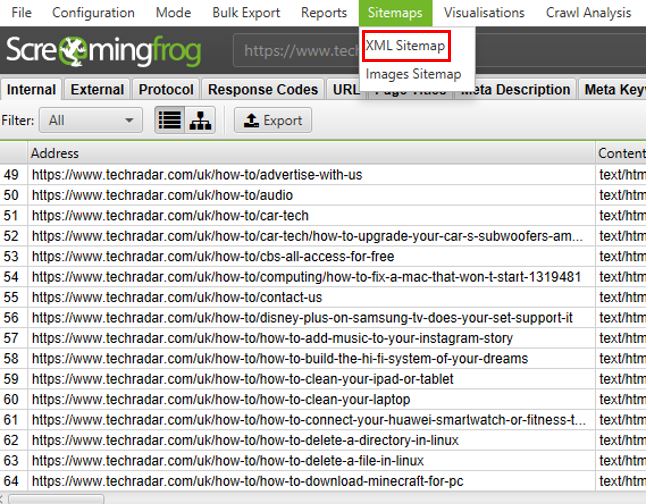
You’re then presented with a series of configuration options on different tabs. The first of these is ‘Pages’. By default, the XML sitemap will only include indexable, 2xx HTML URLs. The likelihood is you won’t want to change these settings. Having 404 pages, for example, in an XML sitemap is bad practice:
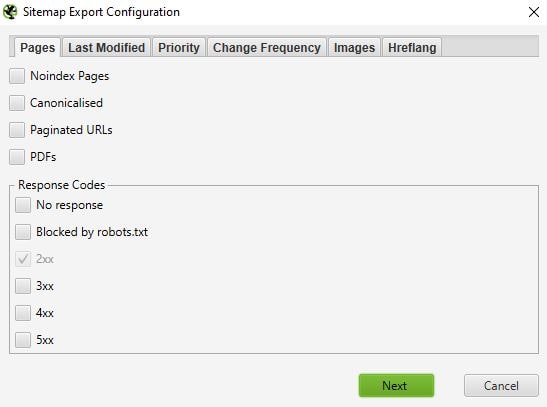
The ‘Last Modified’ tab allows you to change or exclude the <lastmod> tag. This isn’t a particularly important tag to bother configuring in an XML sitemap, and Google have previously said they mostly ignore the lastmod tag in XML sitemaps.
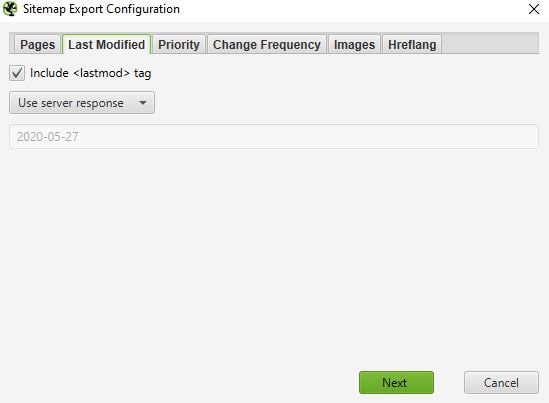
Next up is the ‘Priority’ and ‘Change Frequency’ tabs. Again, Google have downplayed the role of these features, but you can always tweak them if you want with the settings in Screaming Frog shown below (if you’re not sure about them, you’re best of leaving them):
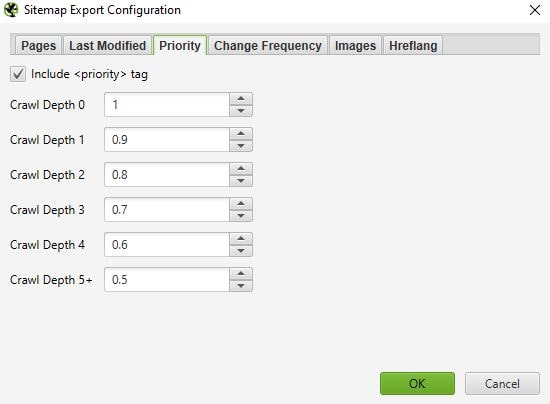

Of more importance is the ‘Images’ tab. By default, the settings will have Images not included, although depending on how your sitemaps are organised (e.g. if you have a separate Image sitemap, or if you won’t be able to fit all your image and HTML URLs in one sitemap (there’s a 50,000 URL limit)), you may want to include these. After all, it could help your images appear in Google image search. If you have images that are hosted outside of your domain on Content Delivery Networks these can also be manually entered in the box in this tab too.
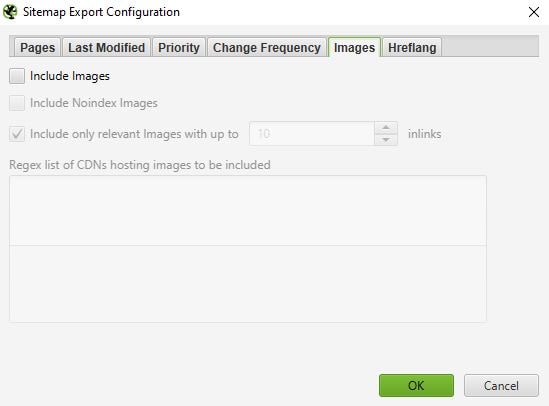
Lastly, there’s the Hreflang tab. If you have an international site that uses hreflang links, then you can tick this box so their elements are included too.
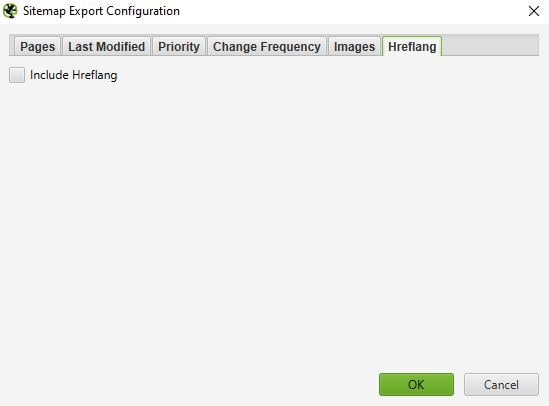
Once you’re done selecting your options in the export configuration, hit OK and Screaming Frog will generate your XML sitemap!

